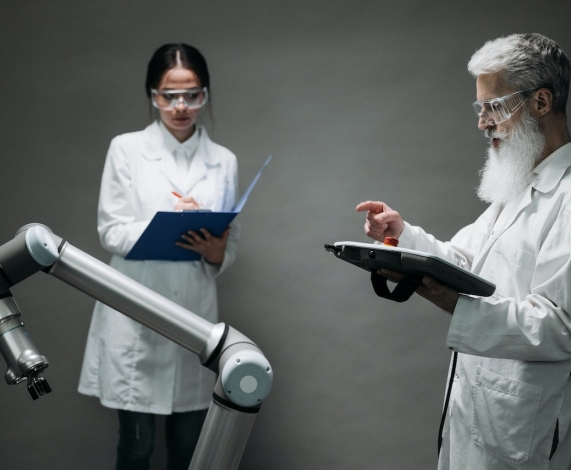The future of work is inextricably linked to the rise of AI, with its everyday use making head waves from voice assistants to self-driving cars. As AI technology advances, it has the potential to reshape the way we work, from simplifying tedious tasks to creating entirely new job roles. For those curious about the future, there’s an intriguing opportunity to prepare for this change and use AI to our advantage. What promising possibilities could AI bring to our working lives? How can we ensure that these changes are beneficial for all of us? Join us as we explore the options and uncover what the exciting future of work with AI holds.


Impact on the Cost of Business and Standard of Living
AI has the potential to bolster businesses by increasing efficiency and reducing costs, ultimately benefitting consumers with lower prices. For example, in the healthcare world, AI-powered chatbots could handle simple requests and schedule appointments, allowing healthcare providers to allocate more resources toward patient care - reducing wait times and improving overall patient experiences.
A report by McKinsey Global Institute estimates that AI could add $13 trillion to global economic output by 2030. Another study by PwC predicts that AI could boost global GDP by up to 14% by 2030, with the most significant gains expected in China (+26%) and North America (+14%). Even still, there is concern that this widespread adoption could lead to job displacement and reduced living standards for those without employment.
Potential Impacts on Different Occupations
The impact of AI on different occupations will vary depending on the type of work involved. AI has the potential to automate mundane and repetitive tasks, freeing up employees to focus on more creative, emotionally-driven, and interpersonal activities. For example, a financial analyst might use AI to rapidly go through data sets, usually taking days or weeks to analyze manually. Meanwhile, healthcare workers could use AI to aid patient diagnosis and treatment while maintaining a sense of human touch.
This may also lead to unique job roles - such as ‘AI trainers’ - requiring professionals with specialized skill sets in ethical AI implementation and development. These professionals would train and teach AI systems, ensuring they are ethical, unbiased, and practical. While this could create some uncertainty for current jobs, it also offers an exciting insight into the future of work - one in which humans and machines collaborate for improved productivity and innovation.



When Would This Happen? Is There Data to Support It?
AI development is rapid and accelerating, and it is difficult to predict precisely when and how AI will impact the workforce. However, there are already examples of AI being used to automate tasks in various industries. For instance, AI is already being used to screen job applicants and sometimes replace human workers in customer service roles. The data shows that AI has the potential to make significant changes to the labor market, with one study predicting that up to 30% of current jobs could be automated by 2030.
Unlocking Fulfillment-Driven Work

The future of work is not just about robots taking over our jobs - it's about how we can work together with AI to create a more productive, efficient, and fulfilling workplace. With AI, we can automate mundane and repetitive tasks, freeing up time and energy for more meaningful and creative work.
Imagine a workplace where you don't have to spend hours sifting through emails or filling out spreadsheets. Instead, AI-powered assistants can handle these tasks, giving you more time to focus on high-level thinking and strategic planning. And who knows, maybe these AI assistants can even make you a cup of coffee, too - now that's a dream job!
But it's not just office workers who will benefit from AI. In manufacturing, for example, robots can work alongside humans, handling dangerous and repetitive tasks. This not only ensures the safety of workers but also increases efficiency and productivity. Plus, with robots doing the heavy lifting, workers can focus on more skilled and fulfilling tasks, like problem-solving and creative thinking.
And what about the service industry? AI-powered chatbots and virtual assistants can provide fast and accurate customer service, freeing human employees to handle more complex issues and provide a better customer experience. Who wouldn't want to deal with a chatbot that's always polite and never grumpy?
Key Takeaways
As investors, it's crucial to navigate the tech hype cycle and not get caught up in the peak of inflated expectations. Instead, taking a long-term approach and understanding the limitations and challenges of technology is vital. For example, investing early in companies like Amazon, Apple, and Google proved to be a wise decision for those who saw the long-term potential of these companies. However, investing in technologies like 3D printing and virtual reality during the peak of inflated expectations proved to be less successful.
It could be helpful to look at the history and development of mature technologies to determine where we are in the tech hype cycle. As time will only tell, as technologists and investors, patience is a virtue.






